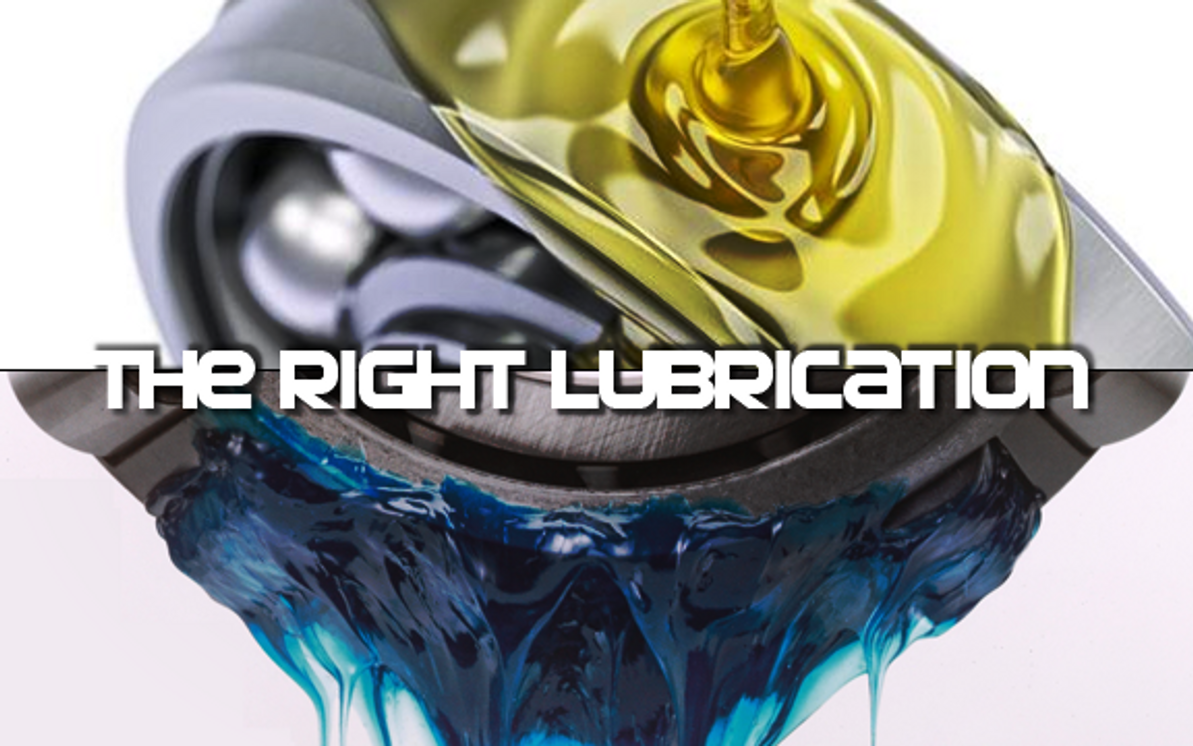Understanding Bearing Lubrication
Are you using the right lubrication for your bearings? Are you unsure which type of greases and oils to use? Not to worry! At Quality Bearings Online we’re here to help find you the right lubrication for your bearings, no matter what type or size.
To prolong the life of your bearings it is crucial to keep them lubricated. This is vital as bearing failure can be more expensive than the cost of lubricating, maintaining or replacing the parts , and can also severely disrupt your operations. Costs can quickly start to add up as the failure of a bearing could lead to production losses due to machine breakdown and costs to replace and maintain.
Did you know?
A leading cause of bearing failure is due to insufficient or improper lubrication, leading to contamination and excess heat building up!
Overtime the loss of bearing lubrication can contribute to equipment failure if they are not re-greased at the appropriate time therefore, it is important to keep your bearings lubricated when carrying out maintenance on them. Remember to always clean your bearings and dry them properly before re-lubricating. If these steps are not carried out thoroughly, it can cause dirt and dust to seep deeper inside the bearings when they are lubricated, which can later lead to bearing failure.
Choosing the Best Bearing Lubrication: Oil or Grease?
Lubricants for bearings take the form of oil or grease and choosing the right lubricant can be challenging as there are thousands of different bearings. Keeping them lubricated with the right oil and grease can extend the life of these mechanical elements, keeping your machines operating for longer with lower maintenance costs.
Oil is ideal for rolling bearing elements. There are several types of oil lubrication systems and choosing the right one will depend on the type and application of the bearing. Oil is often chosen to lubricate bearings in systems that constantly operate at high temperatures. It can help protect the bearing from rust, corrosion and maintain viscosity control when dilution occurs.
Grease is a semi-fluid to solid thickening agent combined with lubricant. It is generally preferred to oil lubrication in applications of bearings that operate at moderate speeds where the temperature is not as high. For example the use of grease lubrication would be used for bearings that operate in wind turbines where oil reserves would be hard to manage and conveyor belts where shock loading often happens. Grease lubricants should be used for bearings that require additional protection from fumes or dirt.
Are you looking for a specific type of bearing oil or grease? Wondering how to find the best grease for bearings? Explore the lubricants section of our site and find the right product for you!
The Dangers Of Too Much Lubrication
Careful! Too much bearing lubrication can cause deterioration and overheating as this can cause the excess grease and oil to increase the temperature in the bearing. Not all greases are the same and not all are compatible with each other either. To protect the bearing’s lifespan it is highly recommended that you stay with the same grease or a compatible substitute throughout its life. However, this will be dependent on several factors such as the type of bearing, design of the bearing and application of the bearing.
Condition & Maintenance
Remember, lubricating your bearing should not be based on time in service but the condition of the bearing. Bearings only need lubricating to reduce friction in the direction that the mechanical element is applied. If the amount of the lubricant is performing the service well, there should not be a need to change it. Friction levels should be monitored and measured for you to know when the time is right for a new round of bearing lubrication.
There are a range of maintenance tools that can be used to help you measure and monitor your bearings and we have selected a few to help you. The TKTI21 Thermal Imaging Camera is a tool that can help you measure how much heat is being emitted from the bearing. The TMSP1 Sound Pressure Meter, is a hand held instrument that can be used to measure the sound level in machines. Additionally, the TKST 11 Electronic Stethoscope should be used to easily locate machine noise, detecting troublesome machine and noise vibrations. You can find all these tools and many more available on our website!
Still struggling to find the right lubrication for your bearing? Not to worry! Our friendly team of experts are ready to help you! Please contact us today for information and the answers to your questions.
Recent Posts
-
Heavy Machinery Bearings: Solutions for High-Load Applications
High-load applications can be put under a lot of pressure in harsh conditions for long periods of …16th Dec 2024 -
How Are Ball Bearings Made and What Are They Used For?
Ball bearings are essential components in a wide variety of machinery and they play a critical ro …21st Oct 2024 -
Avoid Downtime With SKF Maintenance Tools
In industries that rely on heavy machinery, unexpected downtime can be costly and disruptive. Avo …30th Sep 2024























